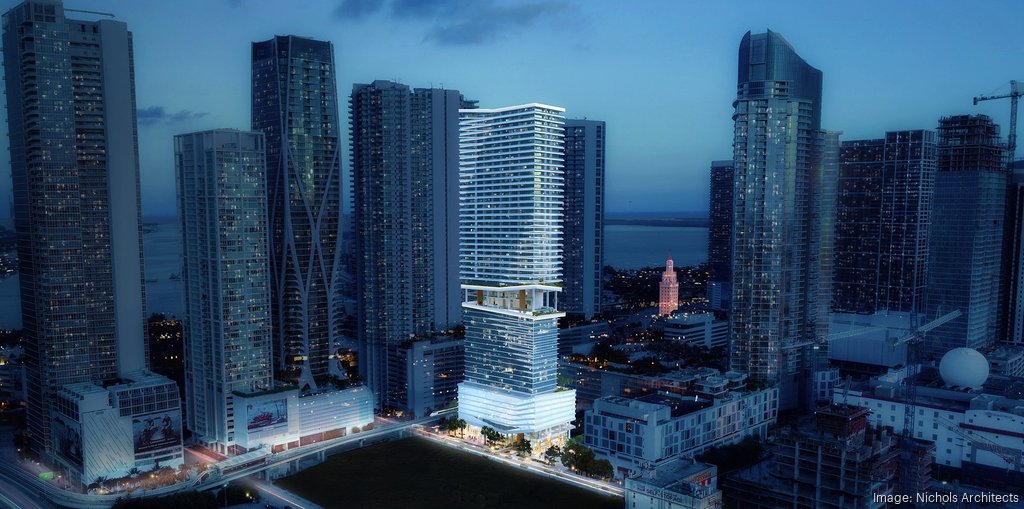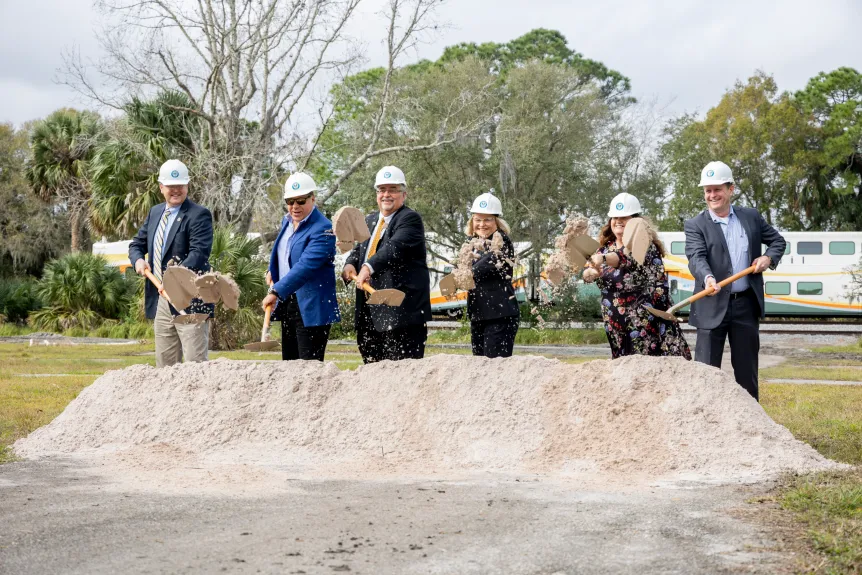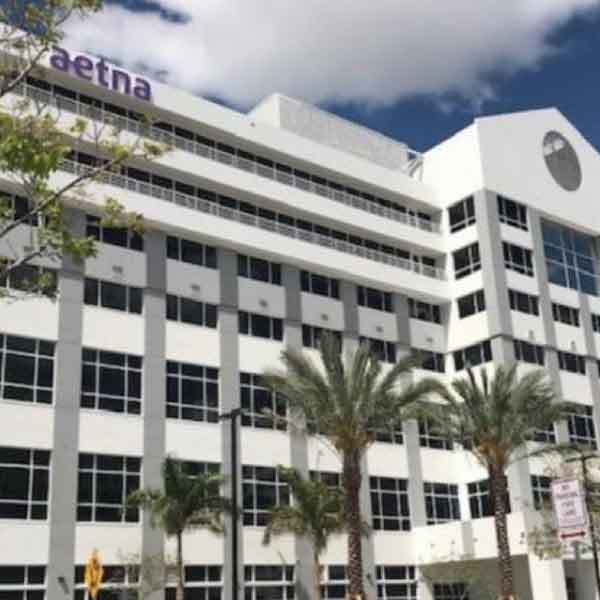

Penciling Out Opportunity
The time has never been better to be a developer—that is, those who aren’t sensitive to rising land and construction costs.

Skanska USA has been active in a handful of cities and wants to go further afield. It’s been evaluating other mar¬kets over the past couple of years and now, CEO Rob Ward says, the firm may have found a candidate: Los Angeles.
The sprawling metropolitan area checks all of the developer’s boxes, including the fact that the area is in a different part of the cycle than the cities in which it’s already active. Not that Skanska wouldn’t love to expand further into the areas in which it already has a presence. In Seattle and Boston, for example, “we would be happy to take on more sites if we could,” Ward says. “It can be highly competitive to find the best locations. The pricing expectation for new sites is very high.”
Companies are approaching the challenge of finding the right opportunity that can accommodate these costs in various ways. Some, like Skanska, are looking in entirely new markets. Others are redeveloping existing assets—especially shopping centers—into mixed-use projects that hold greater appeal and provide better numbers. Some companies are grabbing air rights when they can to give themselves as much flexibility as possible. And some are finding that no matter what the costs are, demand is so strong that development must go forward, even on a speculative basis.
Despite these issues, developers are enthusiastic about the remainder of this cycle. A recent survey by Wells Fargo Equipment Finance shows that construction executives are more optimistic about nonresidential construction activity. At 133, the survey’s Optimism Quotient is a ten-point increase over 2017 and its highest level in 20 years. According to John Crum, SVP and national sales manager of Wells Fargo Equipment Finance’s construction group, many industry participants feel that 2018 could be one of their best years ever.
“Right now the US economy is very good,” says Arthur Falcone, CEO, and Chairman of Falcone Group. “We have a clear view of at least the next 18 months.”
Yet not all companies are finding completely satisfactory solutions to the problem of rising costs. “Land remains one of the greatest costs in rental housing because development has been concentrated in urban areas—that’s prime real estate,” says Bob Pinnegar, CEO of the National Apartment Association.
There’s also rising construction wages, he adds, and a multitude of other costs to con¬sider. These include entitlements, parking, flood prevention and remedial construction, such as building a nearby park for the community. Parking alone can cost tens of thousands of dollars per spot, he says.
Multifamily construction is still active, but developers are increasingly being boxed into luxury apartments—the num¬bers simply don’t pencil in any other way. But like development costs, the rents there are rising so much that even middle-income residents are being priced out of these proj¬ects, says Ben Easterlin, managing director for Commercial Lending at Angel Oak Capital Advisors. “Developers are using tax abatements to help offset project costs, but they’ve mostly benefited the luxury market, where it isn’t needed. They don’t provide enough relief for affordable housing.”
The high cost of multifamily is partly why mixed-use is becoming a near-essential strategy for so many developers. These proj¬ects allow them to hedge their bets while appealing to a diverse tenant pool.
That’s play Kimco Realty is making now, shares COO Dave Jamieson. The primarily retail-focused REIT is seeking out entitle¬ments with local officials and agreements with certain tenants to add residential and hotel uses to their shopping centers.
In Cupertino, CA, for instance, Kimco owns a retail center across the street from the Apple Campus 2. The REIT is currently going through the entitlement process to add a hotel there to help service the ven¬dors that are visiting the campus, says Jamieson. It’s a strategy that works well for Kimco for several reasons.
“The fact is, our shopping centers’ built areas probably comprise only 25% to 30% of the total acreage of what we own,” says the COO. Plus, the REIT has owned these centers for a long time, which means it has a low land basis, making the new projects more affordable. “It’s very difficult to assemble acreage at a reasonable cost in these top•tier markets—areas that have the growth, population densities, higher incomes, and education.”
Other retail developers are following a
similar tract. The Falcone Group has three major projects underway in Florida: the Miami Worldcenter, which is currently in the lease-up stage, the Margaritaville Resort Orlando and Plantation Walk. Each devel¬opment has a different orientation—Miami Worldcenter is known for its high-street retail, while the Plantation Walk has a range of uses, including residential, office, hotel and 160,000 square feet of retail. The Margaritaville Resort, for its part, is akin to Disney World, with an array of retail, restau¬rants, and entertainment.
The mixed-use component is key to these projects’ success, says chairman and CEO Arthur Falcone. That, and the fact that the company buys and assembles its parcels on a wholesale basis due to the size of its projects. “That’s a major differentiat¬ing feature that most people would have heartburn over since they’re having to buy each niece on a retail basis.” he points out.
Not all developers have the advantage of a longstanding land bank or the ability to buy land on a wholesale basis. These companies are tapping other structures to bring down costs as much as possible.
The Florida land market, for instance, has matured significantly, which has led to a scarcity of prime real estate—and more sophistication in overall legal structures, ‘Ownership is effectively split between the landowner and the leasehold owner, which owns the improvements” he relates. “What the leasehold owner has done is effectively converted that upfront land cost into an ongo¬ing rental payment:
In some sectors, though, demand cannot wait for supply to catch up—even when the supply has problems with rising costs. Such is the case in the industrial sector, which is stretched to capacity due to eCommerce and changing supply chain patterns. “Companies simply will not wait 18 to 24 months to occupy a building,” says Robert K. Mericle, president, and CEO of Mericle Commercial Real Estate projects, Capital Tower. Being called a game-changer for Houston’s downtown, the approximate 780,000-square-foot build¬ing sits on a full block and will be con¬nected to five underground pedestrian tunnels. “I don’t think there are any other buildings with connections to that many tunnels, so we’re seeing it as a type of Grand Central Station for Houston,” Ward says. The project’s retail component is based around the traffic flows from inside and outside of the tunnels—a design conceived years ago that fits well with the current trend of transit-oriented live-work space.
Likewise, at Related Cos.’ Hudson Yards, its mammoth project in New York. At the start of the planning process, “we thought about what our residents, employees, and visitors would need, and expect, from a true 21st Century neighborhood,” says Jay Cross, says Ira Teicher, partner, Stroock & Stroock & Lavan LLP. “I’m seeing an evolution from, say, a straightforward condo structure to one that involves air rights for mixed-use development,” he observes.
In such deals, a developer creates differ¬ent air parcels and puts together various uses to create a mixed-use vertical development, he explains. The building looks the same from the outside, but the various uses typi¬cally have their own entrances. In essence, the building could have two lobbies—one for the 10 stories of multifamily or condos and another for a hotel.
Ground leases are another structure developers turn to in order to mitigate land costs, or when an owner doesn’t want to sell, says David Eyzenberg, president of invest¬ment bank Eyzenberg & Co. The tenant is usually the developer who builds a property on the land through a ground lease Services. As such, developers are seeking sites that have been fully cleared, graded and made ready for footers and founda¬dons. “Developers don’t have the liberty of taking a raw site, obtaining all the permits and approvals, installing utilities and preparing the building pad.”
This is especially true in places like northeastern Pennsylvania, where the mountainous terrain and uneven eleva¬dons are obstacles to large-scale develop¬ment. “In order to compete, developers have no choice but to fully prepare sites far in advance of future company inquiries.”
But that’s a developer’s game, after all—estimating where demand will be in advance of it actually emerging. Costs are simply part of that game. “Developers have to be vigilant to stay ahead of the innovation and evolu¬tion of our industry,” Skanska’s Ward says.
As an example, he cites one of its current president of Hudson Yards. That meant chewing over everything from cell phone service and waste management to pedes¬trian traffic, noise, and temperature.
For example, they knew they needed a plan for the next superstorm, Cross says. “We are already far above the flood plain, but we needed to ensure that building services, residences, and restaurant refrigera¬tors could keep operating, no matter the disruption,” he relates. “So we built a first¬of-its-kind micro-grid and two co-genera¬tion plants on site that can generate elec¬tricity and water, with over twice the efficiency of conventional sources.”
The development’s first building to open, 10 Hudson Yards, recently received LEED Platinum certification—the first New York City office building to receive such a rating since the LEED 2009 system went into effect.



